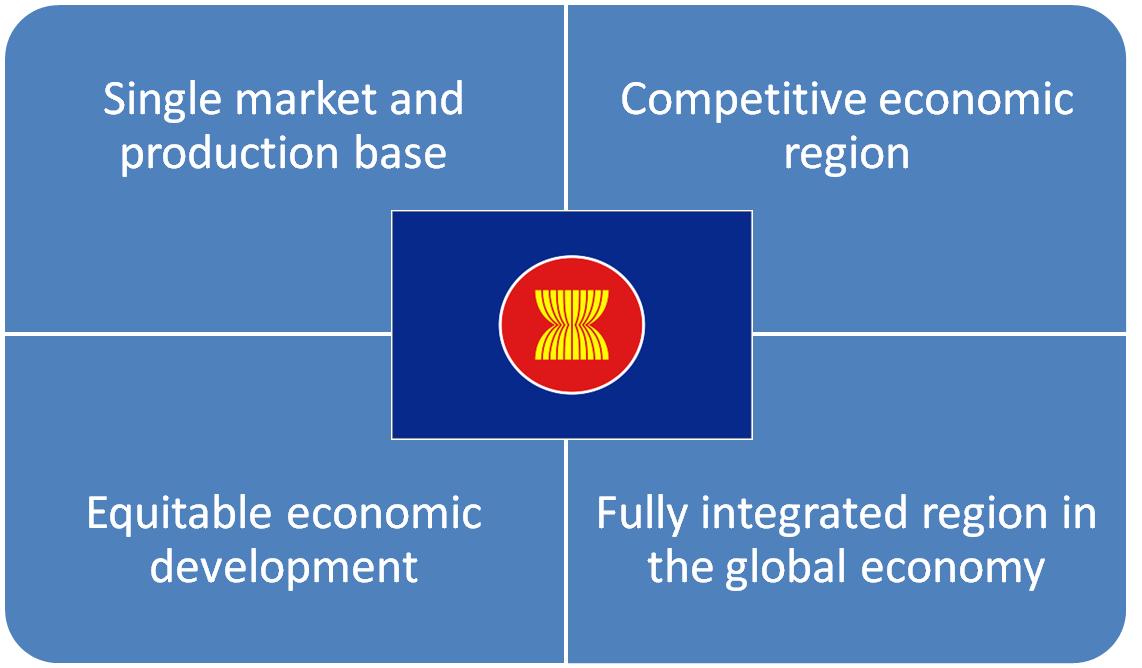The move towards an ASEAN Single Aviation Market boosted infrastructure investment and aviation development plans in the region. Growth is also attributed to the proliferation...

ASEAN Economic Community
How viable is investing?
-
About AEC
The AEC is the realisation of the region’s end goal of economic integration. It envisions ASEAN as a single market and production base, a highly competitive region, with equitable economic development, and fully integrated into the global economy.
Once AEC is realised, ASEAN will be characterized by free movement of goods, services, and investments as well as freer flow of capital and skills. With harmonised trade and investment laws, ASEAN, as a rules-based organisation will be strengthened and become more interesting as a single investment destination.

Realising the AEC
Initiatives towards the establishment of the ASEAN Economic Community (AEC) can be traced back to as early as 1992 when ASEAN leaders mandated the creation of the ASEAN Free Trade Area (AFTA).
In 2003, ASEAN leaders agreed to build-on the momentum and progress it gained in AFTA and other efforts to broaden and deepen regional cooperation. Through Bali Concord II, ASEAN leaders committed to maximize opportunities for mutually beneficial regional integration and declared the AEC as one of the three pillars of the ASEAN Community, the two other being Political-Security Community and Socio-Cultural Community. Succeeding years saw the signing of several regional cooperation agreements, some of which replaces or improves earlier agreements, to support the realisation of the economic community.
AEC-Related Agreements
ASEAN has signed several agreements to support AEC realisation. The building blocks are the ASEAN Trade in Goods Agreement (ATIGA), which replaces the Common Effective Preferential Tariff (CEPT) Scheme; the ASEAN Framework Agreement on Services (AFAS); and the ASEAN Comprehensive Investment Agreement (ACIA), which replaces the ASEAN Investment Agreement (AIA). In support of the above are facilitation measures which include the ASEAN Agreement on Movement of Natural Persons (AAMNP) and Mutual Recognition Arrangements on Services (MRAs).
These agreements aim to:
-
Facilitate the movement of goods, services, investments, capital, and skills
-
Increase trade (goods and services) and investment among Member States
-
Promote and expand regional production sharing and network
-
Promote higher level of transparency and predictability
There are also several transportation-related agreements, which include the ASEAN Framework Agreement on the Facilitation of Foods in Transit (AFAFGIT), ASEAN Framework Agreement on Multimodal Transport (AFAMT), and ASEAN Framework Agreement on Facilitation of Inter-State Transport (AFAFIST).
See AEC-Related Agreements at a Glance for more information.
AEC-Related Programs
To promote investment, ASEAN launched several projects such as the ASEAN Investment Website which highlights the viability of the region as an investment location, the ACIA Forum, and the publication of the annual ASEAN Investment Report, among others.
Initiatives related to enhancing trade include the ASEAN Single Window which will allow traders to submit trade-related documents in one place through electronic exchange among ASEAN countries; ASEAN Self-Certification System which will allow exporters to declare and self-certify the ASEAN product content in their products; and ASEAN Customs Modernization.
ASEAN also pursues initiatives to ensure food safety and security and address climate change. One of these is the ASEAN Integrated Food Security (AIFS) Framework which promotes the development of sustainable food production through agricultural infrastructure improvements, adoption of new technologies, etc.
To achieve financial integration, ASEAN is constructing long-term infrastructures for developing ASEAN capital market which will enhance market access, linkages, and liquidity. It is also working towards capital account liberalisation through the removal of capital controls and restrictions, including the elimination of restrictions on current account transactions, FDIs, and portfolio flows.
Seeking to improve the physical connectivity of the region, ASEAN lines-up projects such as the ASEAN Highway Network, Singapore-Kunming Railway Link, and the ASEAN Power Grid. Other ASEAN initiatives are geared towards, among others, the protection of intellectual property rights, consumer protection, tourism promotion, public-private dialogues and partnerships, and narrowing the development gaps in the region.
Benefitting from the AEC
Achieving the objectives of AEC translates to a better investment climate in ASEAN. The AEC facilitates the implementation of trade, services, investment, and other reforms necessary in each ASEAN Member States, thereby improving each country’s location offers. At the regional level, the AEC is critical in developing the ASEAN as a region and making it one of the most competitive economic blocs in the world.
See Expected Outcomes and Benefits of Select AEC agreements.
-
-
Integrating ASEAN’s Economy
ASEAN is keen on integrating the region through the realisation of the ASEAN Economic Community (AEC) by 2015. Vast opportunities await investors as ASEAN strives to achieve the four pillars of an integrated economic region.
Industries
-
- Site Map
- Terms & Abbreviations

